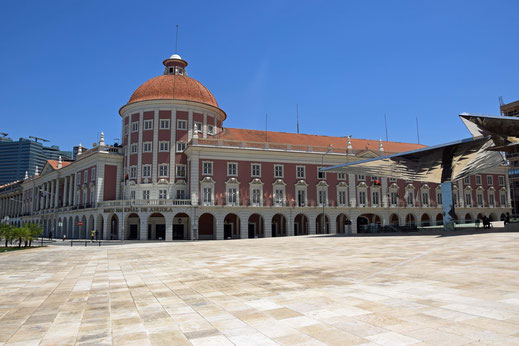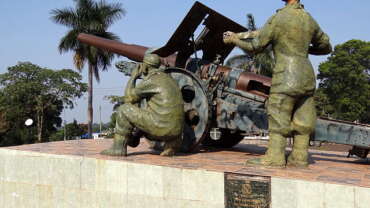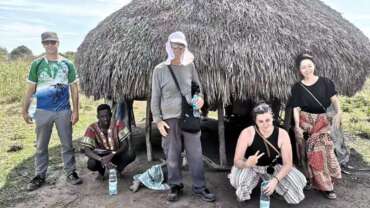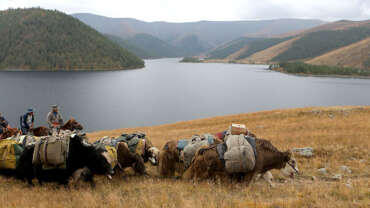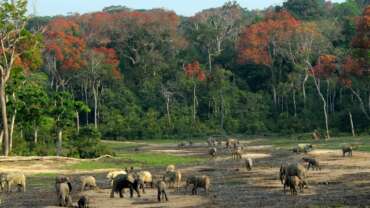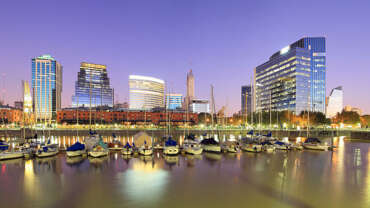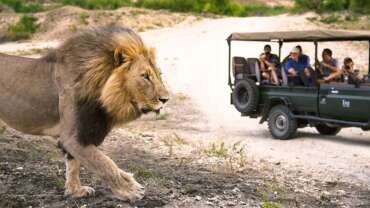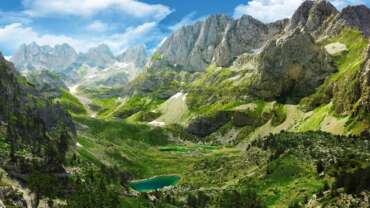Angola - Know before your trip
In Angola, nurture your adventurous spirit. Far away from mass tourism, you will experience a pristine Africa, not polished for tourists. Experience the real country and get to know the people. Angola is an exceptional destination that offers you a unique experience such as ethnic groups, Mumuíla, Muhimba, Mucubal, Muacahones, Ngendelengue.
Angola still offers a pure and authentic experience for tourists. The decades-long civil war, which ended in 2002, meant that many regions were untouched by people and have been taken back by nature. Till the the years 2017, the Angolan visa was one of the hardest to get around the world.
Even though the country is gradually opening up to tourism, Angola is still not an easy destination to visit. Frequent power outages, car accidents caused by the tropical climate
and poor road conditions, as well as general difficulties of a developing country make Angola an adventure not for the faint-hearted. For the locals this is normal everyday life, but for travelers from better organized countries, this can be a nerve-racking rehearsal.
Please be aware that despite careful organization and preparation, not everything may go according to plan. From time to time external influences such as traffic or weather may impact plans. We always strive to make your stay as smooth as possible, but a country like Angola brings with it challenges that you might not expect in industrialized nations. In these circumstances, we will always make your safety a priority, rather than the planned event.
History of Angola
This discussion mainly focuses on Angola since the late 15th century. For a treatment of earlier periods and of the country in its regional context, see Southern Africa.
Early Angola
Most of the modern population of Angola developed from the agricultural cultures that appeared there from about 1000 to 500 bce, which by the first centuries ce were also working iron. These people probably spoke the ancestral versions of Angola’s present languages. Complex societies also may have been established at that time, and by 1500 several large kingdoms occupied the territory of Angola. Of these, Kongo, situated in the northern part of the country, south of the Congo River, was the largest and most centralized. Ndongo, with its centre in the highlands between the Cuanza (Kwanza) and the Lukala rivers, was an important rival. Other states, such as the kingdom of Benguela on the Bié Plateau, are less well known. Smaller states, including Bailundu, Ciyaka, and Kwanhama, were scattered between the larger kingdoms, sometimes remaining independent, sometimes falling under control of the larger kingdoms. The Chokwe, although they did not have a centralized government, established an important cultural centre in the northeastern part of the country.
The Kongo kingdom and the coming of the Portuguese
The Kongo kingdom, the most powerful state to develop in the region, emerged in the 14th century as the Kongo people moved southward from the Congo River region into northern Angola. There they established Mbanza Kongo as their capital. Portuguese navigators reached Kongo, in the northwest, in 1483 and entered into diplomatic relations with the kingdom after that. Moreover, Kongo’s king converted to Christianity, and his son Mvemba a Nzinga took the Christian name of Afonso I, establishing the religion permanently in the country, along with literacy in Portuguese and European customs. Disputes over control of trade, particularly regarding slaves from Kongo and its neighbours, led the Portuguese to look for new allies, especially the Ndongo kingdom. After undertaking several missions there, the Portuguese established a colony at Luanda in 1575. Subsequent wars with Ndongo, particularly after 1617, brought the Portuguese significantly more territory, despite the resistance of Queen Njinga Mbande of Ndongo and Matamba. Portuguese expansion was largely over by 1670, and further conflict involved attempts to redirect or tax trade.
Slaves were Angola’s major export, and Portugal was actively involved in their acquisition, more so from the late 17th century. People were also enslaved through inter-African conflicts, such as the civil wars in Kongo after 1665, and conflicts that occurred during the rise of the great Lunda empire after 1750, in the Dembos region between Kongo and Matamba, and on the Bié Plateau. Population losses were considerable, and the demography was badly distorted; censuses from the late 18th century show that there were twice as many adult females as males.
The expansion of the slave trade was but one of several factors that played a role in the rise and fall of the region’s kingdoms. Beset by civil wars, Kongo entered into a steep decline in the 17th century. The Loango kingdom flourished north of the Congo estuary until it was decentralized by the late 18th century. The Ndongo kingdom in the Malanje highlands reached its height in the late 16th century but was destroyed when the Portuguese pushed inland in the 17th century and was replaced by the Kasanje kingdom in the Cuango (Kwango) River valley.
Colonial transition, 1820s–1910
In the 18th and 19th centuries, the port of Cabinda was a major entrepôt, where slaves were an important commodity. The export of slaves was banned in Angola in 1836, but the trade did not end until the Brazilian market was closed in the early 1850s. Slavery itself was legally abolished in the Portuguese empire in 1875, but it continued in thinly disguised forms until 1911 and in many cases into the 1960s. Slaves were exported to the coffee and cocoa plantations of São Tomé from the 1860s and were used in Angola to produce coffee, cotton, sugar, and fish. But from the 1850s, exports came to be dominated by products hunted or collected by Africans, first ivory and wax and later wild rubber. These changes came about as the industrial revolution reorganized the world economy, and items such as cloth and metal goods were now available for import and at less expense than in the past. Africans responded to this by ceasing local production of these goods and instead paying for the imported versions with commodity exports of peanuts and wild products such as honey, animal skins, ivory, and eventually rubber.
The slave trade had primarily been a state business and did not greatly affect the local communities from an economic standpoint. In contrast, this new trade involved the whole population: hundreds of thousands of people were employed in the transport and production of these commodities, and their increasing wealth, involvement in the international economy, and interest in commercial policies led to many problems for both indigenous and colonial governments. The Ovimbundu turned from slave raiding to long-distance trade, and their caravans penetrated as far east as the East African coast. The Chokwe were expert hunters of elephants and collectors of wax and rubber, and they used their accumulated firearms to overthrow the Lunda empire in the 1880s. The Kasanje kingdom collapsed when illicit slave trading undermined the king’s central slave market and newly enriched commoners demanded a stronger voice in government.
Angolans closer to the coast were more affected by the slow expansion of Portuguese colonialism and by the loss of land to settlers. Cotton and sugar were grown from the 1840s on oasis plantations along the coastal strip, and immigrants from the Algarve built up the fishing industry. Spontaneously occurring stands of coffee led the Portuguese to carve out plantations in the Malanje highlands beginning in the 1830s, and work on the railway from Luanda to Malanje commenced in 1885. Construction began in 1902 on the Benguela Railway, which was intended to serve the Katanga mines in the Belgian Congo (now the Democratic Republic of the Congo). Portuguese small farmers were settled in the Huíla highlands from the 1880s to counterbalance an influx of Boer trekkers from South Africa, and the southern railway was begun in 1905. In the Maiombe forest of the far north, plantations of cacao and oil palms were laid out in the 1900s.
Angola’s borders, including those for Cabinda (an exclave located in the country of the Democratic Republic of the Congo), had been finally determined by negotiations in Europe in 1891, but the Portuguese focused exclusively on administering areas with plantations and railways and introduced systematic taxation of Africans only in 1906. Many positions in the colonial administration were held by Angolan Creoles, who were initially accepted as full Portuguese citizens. The spread of British and American Protestant missions from the 1870s was countered by government-subsidized French Roman Catholic missions.
From colonial conquest to independence, 1910–75
The proclamation of the Republic of Portugal in Lisbon in late 1910, followed in 1926 by the creation of the authoritarian New State (Estado Novo), marked the advent of modern Portuguese colonialism. The authorities stamped out slavery and undertook the systematic conquest of Angola. By 1920 all but the remote southeast of the colony was firmly under Portuguese control. Kingdoms were abolished, and the Portuguese worked directly through chiefs, headmen, and African policemen. Conversions to Christianity increased, and by 1940 there were about a million Christians in Angola, some three-fourths of them Roman Catholics. Angolan “natives” were taxed and subjected to forced labour and forced cultivation, with a stringent set of tests imposed on the few nonwhite “assimilated persons” who applied to be exempted from these impositions. Increasingly, Portuguese immigrants replaced Creoles in the administration. This trend continued, forcing Creoles into positions with lower pay and prestige and ultimately leading to the growth of Creole-led nationalism.
Angola’s economy was modernized and bound to that of Portugal by a system of protective tariffs. A network of dirt roads was built, and the Benguela Railway was completed to the boundary of the Belgian Congo in 1928. Lorries (trucks) and fixed stores replaced trading caravans. Coffee, sugar, palm products, and sisal came mainly from the estate sector, and corn (maize) and cattle from smallholders. The cultivation of cotton for Portuguese textile mills was imposed by force. Alluvial diamond mining dominated the northeast from 1912; the fishing industry expanded; and import-substitution industries were started.
After the independence of the Belgian Congo in 1960, a major revolt rocked northern Angola in 1961; it was followed by a long guerrilla war. Land alienation and forced labour sparked rebellion in the coffee zone, while in the Cuango valley the peasants rose against forced cotton cultivation. An attack on the prison in Luanda was led by frustrated Creoles. To contain the revolt, the Portuguese deployed large numbers of troops, set up strategic hamlets (forced settlements of rural Angolans), and, by encouraging Portuguese peasants to immigrate to Angola, raised the European population to about 330,000 by 1974. At the same time, they tried to improve relations with Africans by abolishing forced cultivation, forced labour, and the stringent tests to gain assimilated status. They also improved education, health, and social welfare services and protected peasants from land alienation. The economy entered into a period of sustained boom, marked by rapid industrialization and the growth of oil production, and the standard of living rose for both urban workers and rural producers.
The armed struggle continued, but the anticolonial guerrillas were seriously weakened by dissension. The Popular Movement for the Liberation of Angola (Movimento Popular de Libertação de Angola; MPLA) was founded in 1956 with the help of the clandestine Portuguese Communist Party, and from 1962 it was led by Agostinho Neto. It was popular in Luanda and among some rural Mbundu, drawing foreign support from the Soviet Union. Initially based in the Republic of the Congo, the MPLA moved to Zambia in 1965. The National Front for the Liberation of Angola (Frente Nacional de Libertação de Angola; FNLA), founded in 1957 under another name and led by Holden Roberto, drew its support from the Kongo and some rural Mbundu. Based in Congo (now the Democratic Republic of the Congo; called Zaire from 1971 to 1997), the FNLA obtained aid from the United States and China. In 1966 Jonas Savimbi set up a third movement, the National Union for the Total Independence of Angola (União Nacional para a Independência Total de Angola; UNITA), with a predominantly Ovimbundu leadership and with some support from the Chokwe and Ovambo (Ambo). UNITA enjoyed little official foreign backing (although China provided some aid) and lacked a secure foreign base because Zambia leaned toward the MPLA. The divisions between and within these three movements, which at times degenerated into armed conflict, allowed the Portuguese to gain the upper hand by the early 1970s. When a military coup in Portugal overthrew that country’s dictatorship in April 1974, all three guerrilla movements had been almost entirely expelled from Angolan soil.
Independence and civil war
The three liberation movements proved unable to constitute a united front after the Portuguese coup. The FNLA’s internal support had dwindled to a few Kongo groups, but it had strong links with the regime in Zaire and was well armed; it thus made a bid to seize Luanda by force. The MPLA, with growing backing from the Portuguese Communist Party, Cuba, and the Soviet Union, defeated this onslaught and then turned on UNITA, chasing its representatives out of Luanda. UNITA was militarily the weakest movement, but it had the greatest potential electoral support, given the predominance of the Ovimbundu within the population, and it thus held out most strongly for elections. But the Portuguese army was tired of war and refused to impose peace and supervise elections. The Portuguese therefore withdrew from Angola in November 1975 without formally handing power to any movement, and nearly all the European settlers fled the country.
People of Angola
Ethnic and linguistic composition
Apart from a few Europeans and isolated bands of Northern Khoisan speakers such as the !Kung (a San group) in the remote southeast, all Angolans speak Bantu languages of the Niger-Congo language family, which dominates western, central, and southern Africa. The largest ethnolinguistic group is the Ovimbundu, who speak Umbundu and who account for about one-fourth of the population. They inhabit the Bié Plateau, having migrated to Benguela and Lobito and areas along the Benguela Railway to the west and east, and live in fairly large numbers in Luanda. The next-largest ethnic group is the Mbundu (Kimbundu), who speak Kimbundu and who also make up about one-fourth of the population. They dominate the capital city and the Malanje highlands and are well represented in most coastal towns. The Kongo (Bakongo, Esikongo)—in the far north, including the city of Luanda and parts of the countries of the Democratic Republic of the Congo and the Republic of the Congo—speak Kikongo and account for about one-eighth of the population. Lunda, Chokwe, and Ngangela peoples live scattered through the thinly populated eastern part of the country, spilling over into the Democratic Republic of the Congo and Zambia. The Ovambo (also known as Ambo) and Herero peoples in the southwest also live in Namibia, while the closely related Nyaneka-Nkhumbi peoples inhabit only Angola.
The use of the Portuguese language by indigenous Angolan groups dates back hundreds of years; in the Kongo kingdom, some were able to speak and read Portuguese as early as 1491. Beginning in the 1920s, Portuguese colonial policies sought to make Portuguese the only language spoken in Angola; these attempts met with limited success. Portuguese is often the only language spoken in Luanda and in much of the interior extending beyond the city and in other parts of the country; in some areas, however, indigenous languages are used in daily life. Because Portuguese developed as the lingua franca of the country and became the language of the present political leadership, those who did not speak Portuguese were effectively excluded from the political process. Since independence the government has recognized the major African languages, including six that were designated as official languages for educational instruction. However, widespread use of African languages in educational instruction never occurred, and the government continued to employ Portuguese for education, written documents, and official usage. In the years since the end of the civil war, there has been a renewed effort to develop a cohesive national language policy that preserves the country’s indigenous languages and associated cultural histories; these efforts include providing language instruction in schools and offering civic materials in indigenous languages. Other languages spoken in Angola include English and Afrikaans, which are sometimes spoken in the south and east, especially by people who have resided in Namibia and Zambia as workers or refugees, and French and, to a lesser extent, Lingala, which are often understood among the Kongo in the north. Kikongo ya leta, a Creole based on Kikongo, is also spoken in the north.
Religion
Angola’s population is overwhelmingly Christian. About two-fifths of the population is Roman Catholic, about two-fifths is Protestant, and some one-tenth adheres to traditional beliefs or other religions.
The current religious makeup of Angola has its roots in the country’s history. In precolonial times, Angolans of various groups followed broadly similar religious traditions that revolved around venerating ancestors and worshipping territorially oriented deities under a creator high god (often known as Nzambi or Suku). That religious system continues in some form in many places today. The Portuguese introduced Christianity into the Kongo kingdom in the 15th century; since the mid-16th century, most Kongo have regarded themselves as Christians, although their practice has often mixed Christian and traditional beliefs. When the colony of Angola was established in 1575, the Portuguese continued to spread Christianity in the regions inland of Luanda and in the surrounding areas.
In the late 19th century, Protestant missionaries entered Angola and made numerous converts among both the Roman Catholic population and those who still followed traditional religions. Baptists operated in the north, Methodists in the Kimbundu-speaking regions, and Congregationalists in areas of Ovimbundu settlement and in the east. The Protestants were especially effective in the Ovimbundu area, despite the efforts of the Portuguese colonial government, which reinforced and subsidized Catholic missionary activities, sometimes harassed Protestants, and served the many Catholic settlers from Portugal who went to Angola. Since the mid-1950s, African Independent Churches, especially Our Lord Jesus Christ Church in the World (Tocoist church), have evangelized from bases mostly in the Democratic Republic of the Congo. In the 1970s the church opposed Angola’s Marxist government and was subsequently banned briefly in the late 1980s.
Nationalist leaders were especially drawn from the Protestant sections of the population, but, when the Popular Movement for the Liberation of Angola (Movimento Popular de Libertação de Angola; MPLA) came to power in 1975, its policy as leader of a Marxist-Leninist state was antireligious. Religious organizations were denounced, Roman Catholics for their collaboration with the colonial state and Baptists and Congregationalists for their role in the leadership of the rival National Union for the Total Independence of Angola (União Nacional para a Independência Total de Angola; UNITA) and the National Front for the Liberation of Angola (Frente Nacional de a Libertação de Angola; FNLA). The Methodist Church, however, from which many MPLA leaders were drawn, was more favourably treated. Religious institutions, hospitals, and newspapers were taken over by the state, though sometimes they were actually run by the religious organizations.
Since the formal abandonment of Marxism and as part of an attempt at national reconciliation, the government has become more tolerant of religious organizations. Formal religious organizations now operate openly again, although there are restraints imposed by official distrust.
Cultural Life of Angola
Cultural milieu
Precolonial culture in Angola was broadly similar from one end of the country to another, albeit with local variations and some differences stemming from the many, though mostly related, languages spoken in the area. A common traditional culture is still noticeable in Angola.
Portuguese contact beginning in the late 15th century produced an overlay of European culture that was accepted to varying degrees in much of the northwestern part of the country. The Portuguese settled at Luanda in 1575 and established the core of colonial Angola in the area approximately 90 miles (150 km) inland from Luanda. By the mid-17th century a mixture of Mbundu and Portuguese culture had emerged in the region, and in 18th-century Luanda, Kimbundu (the language of the Mbundu) predominated as the language of the elite; even Portuguese of considerable stature who resided locally spoke Kimbundu, often in preference to Portuguese. In the 19th century the Luanda elite embraced both Kimbundu and Portuguese culture and language and valued their blended nature, and the eventual cessation of Kimbundu as the language of the elite did not occur until after 1910. In contrast, a class of mixed origin (including government officials, the assimilated African and mulatto population, and, later, the settlers that moved to the country after 1945) that was strongly Portuguese in language and cultural expression developed after 1850 with the Portuguese conquest of the rest of Angola and with the programs of assimilation that were begun in 1910 and intensified after 1926. This predominantly Portuguese culture coexisted with a less-assimilated rural population that harkened back to the mixed culture of earlier times (especially in the Kongo areas) or to the traditional cultures (in those regions brought under Portuguese control after 1850). Protestant missionaries introduced North American and British influences; they were anxious to promote significant cultural change—including the introduction of many Western norms under the guise of modernization—as well as religious conversion, although they preferred to teach in indigenous languages.
After independence the propaganda of the emerging nationalist movements placed a greater value on the purely African culture, but, because of the colonial policy of assimilation, most educated Angolans were more Portuguese than African in their general cultural orientation. This created considerable cultural conflict and had political implications as well, because those who were assimilated were generally the educational and political leaders. Although rigorous censorship ceased in the 1990s, both the cultural ambiguity of many in the government and the desire to discourage the “tribalism” that endured initially made Angola, in spite of official positions, less supportive of cultural expressions that were not Portuguese based. However, this began to change in the first decade of the 21st century, as the government appeared to be somewhat more accommodating.
Daily life
The mixture of Portuguese and African culture has made urban Angola, especially the Luanda region, more like a Latin American than an African country. Its nightclubs, restaurants, and annual Carnival might seem at home in Brazil had not war and security measures made this sort of social life difficult. Nevertheless, the country has much to celebrate in its cuisine, festivals, and artistic traditions.
As in much of sub-Saharan Africa, palm oil is an indispensable part of many Angolan dishes, and a number of dishes emphasize the Angolan population’s love of seafood. The feast of Nganja, usually celebrated in April, is a harvest festival during which children roast corn. The Futungo market, near Luanda, provides craftsmen with a place to sell their handicrafts.
The arts
Wood, clay, copper, reeds, ivory, shells, and the human body are the main media for Angolan decorative arts. The wooden sculptures of the Chokwe people, the carved ivories of Cabinda, and the elaborate hairstyles of the Nyaneka and Nkhumbi peoples are especially famous. A number of modern artists and graphic designers work with both African and Western motifs in the general realm of modern African art. Music and dancing play a central role in cultural life, with the drum as the basic instrument; there is also a rich oral literature. Since independence various government research agencies have tried to collect ethnographic material and to do archaeological studies, but their work has been sporadic and limited by the war.
Western influences, which tend to predominate in the towns, have increasingly overshadowed traditional culture. During the 19th century, a dynamic group of educated Africans emerged in Angolan towns. These individuals wrote newspaper articles, histories, novels, and poems in Portuguese and also explored Mbundu folklore and ethnography. The right-wing dictatorship in Portugal drove much of this literary activity underground after 1926 but failed to destroy it altogether. Although the leader of the MPLA at independence, Agostinho Neto, was renowned throughout the Portuguese-speaking world for his poetry, his government too curtailed artistic freedom, implementing a rigorous system of censorship. Additional artistic outlets emerged by the mid-1990s with the rise of a national television service and the beginnings of a national film industry.
Angola has many traditional instruments, including the ngoma, a bongo drum, and the mpwita, a drum originally found in Kongo. Also noteworthy are the mpungu, a trumpet, and the Luandan hungu, equivalent to the mbulumbumba of southwestern Angola, both types of gourd-resonated musical bow. These stringed instruments traveled with slaves to Brazil, where they developed into the berimbau.
Contemporary music in Angola combines the African influences in the music of the Caribbean, the United States, and the Democratic Republic of the Congo with the Latin influences of Cuba and Brazil. Angola’s poverty and civil unrest have provided few opportunities for professional musicians, especially because the Ministry of Culture has exerted much control over commercial music production since independence; despite this, musical expression has flourished in informal sectors.
Cultural institutions
An ambitious program to expand museums, libraries, and archives, initiated in the postindependence era, has borne little fruit. A National Institute for Cultural Heritage does exist in Luanda, but material from other local museums was either looted or removed to Luanda during the course of the war. The National Historical Archive, also in Luanda, houses material dating to the 17th century. The Kongo Kingdom Museum in M’banza Congo is home to many cultural artifacts. Many other fine collections built up in colonial times were destroyed, dispersed, or made unavailable to the public. Following the end of the civil war in 2002, the government and private organizations began the process of renovating or rebuilding cultural institutions damaged in the war.
Come & Explore Angola
After years of civil war Angola is now one of the emerging countries of Africa. Increasingly popular for businesses and tourists, Angola is now back on the world radar. Situated in the south-west of Africa, the country is divided into 18 administrative districts bordering Namibia, Zambia, the Republic of Congo and the Democratic Republic of the Congo.
The largely untouched nature, cultural diversity, unique wildlife and the hospitable locals make Angola fascinating for tourists. As soon as you leave the capital, Luanda, you will feel like an explorer. Far away from mass tourism you can still experience the real and original Africa.



